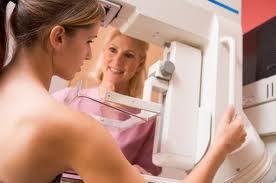by
Brendon Nafziger, DOTmed News Associate Editor | December 09, 2010
A tough economy and conflicting recommendations have hit women's health clinics, but how badly? A new survey suggests mammography volumes could have fallen by as much as 4 percent since last year, but the size of the study and other factors mean the industry still awaits a definitive answer.
"There's really a lot of anecdotal figures being thrown about, but from what we've seen there has not been a hard study" on impacts, Mary Lang, a spokeswoman for Beekley Corporation, told DOTmed News.
Beekley Corporation, which manufactures and sells skin markers used in mammography, surveyed a list of 500 hospital administrators around the country. "It was a small sampling to see what we could get to begin with," said Chelsea M. Fithian, a marketing manager who led the study for the Bristol, Conn. company.



Ad Statistics
Times Displayed: 316
Times Visited: 2 Keep biomedical devices ready to go, so care teams can be ready to care for patients. GE HealthCare’s ReadySee™ helps overcome frustrations due to lack of network and device visibility, manual troubleshooting, and downtime.
The survey found among the 35 clinics that answered, there were about 10,000 fewer exams this year.
For the survey, the group looked at exams taken from the first nine months of 2009, to the same period this year. The group said there were approximately 243,475 mammograms from respondents from Jan.-Sept. 2009, but only 234,313 for that period this year. There was also wide variability. Some clinics did better this year, some did worse. One site saw 20 percent gains, Fithian said. But on average, there was a drop in volume of 4.2 percent.
The clinics came from 21 states, but no regional patterns emerged, she said.
The survey got a 7 percent response rate, fairly average, but because of the small size it's tough to know how accurate it is or to generalize from it to the 8,000-odd U.S. breast clinics certified and tracked by the Food and Drug Administration."At this point it's not like we can even say margins of error, because it is a small sampling, so the range is quite large," Fithian said.
But it matches the other industry study Beekley knows of. At the AHRA conference in August, Washington, D.C. consulting firm The Advisory Board Company shared the results of a survey that women's imaging volumes declined a median 7 percent from first quarter 2009 to the same period in 2010. This study also showed wide variability, with few patterns.
The causes of the decline - if that's what it is - are difficult to tease apart. A medical director of a U.S. breast center interviewed for the ABC study blamed rising insurance costs, as increased deductibles could drive patients to turn away from medical care seen as nonessential. Many suspect the
U.S. Preventive Services Task Force's explosive recommendations could play a role. The influential group controversially recommended in Nov. 2009 that women forgo annual exams in favor of biennial screening and that women aged 40 to 49 skip screening mammography altogether. While many cancer groups, politicians and activists slammed the report, if it managed to sway women it could have a big effect. ABC estimates that women in the 40-49 age group account for a quarter of total screening volume.
"There's no way to tell what the impact was from, because it was from the perfect storm of all the things" happening in the industry over the last few years, Fithian said.

